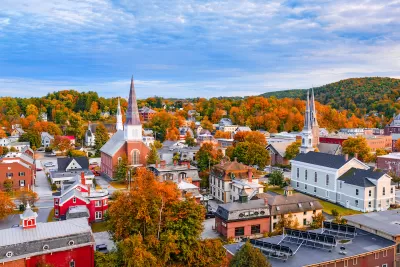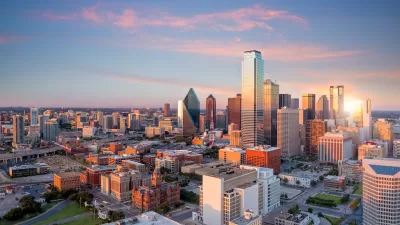The Vermont city will allow larger residential buildings and adjust other requirements to spur more ‘missing middle housing’ development.

Residential neighborhoods in Burlington, Vermont will now be able to accommodate slightly larger buildings thanks to zoning reform passed this week, reports Corey Dockser for Vermont Public.
The new rules allow up to two buildings with four units each and adjusts floor area ratio and lot line rules. “For people in large single-family homes they can no longer maintain or which don’t meet their accessibility needs, smaller housing options give them the option to downsize. And building in already-established neighborhoods means the amenities and infrastructure older people need are already available.”
Although the reforms are aimed at increasing the housing supply, city councilor Ben Traverse says “The most immediate change that we may see is existing homeowners being able to renovate or add on to their homes in ways that they haven’t.”
The new rules also create a “residential corridor” that permits buildings up to four stories tall that can include commercial uses.
FULL STORY: Burlington’s new zoning sets city up for more ‘missing middle’ housing

Planetizen Federal Action Tracker
A weekly monitor of how Trump’s orders and actions are impacting planners and planning in America.

DARTSpace Platform Streamlines Dallas TOD Application Process
The Dallas transit agency hopes a shorter permitting timeline will boost transit-oriented development around rail stations.

Four Reasons Urban Planners Can’t Ignore AI
It’s no longer a question of whether AI will shape planning, but how. That how is up to us.

Texas State Bills to Defund Dallas Transit Die
DART would have seen a 30% service cut, $230M annual losses had the bills survived.

Bikeshare for the Win: Team Pedals to London Cricket Match, Beats Rivals Stuck in Traffic
While their opponents sat in gridlock, England's national cricket team hopped Lime bikes, riding to a 3-0 victory.

Amtrak’s Borealis Exceeds First Year Ridership Expectations
205,800 passengers have boarded the St. Paul to Chicago line, well above initial MDOT projections.
Urban Design for Planners 1: Software Tools
This six-course series explores essential urban design concepts using open source software and equips planners with the tools they need to participate fully in the urban design process.
Planning for Universal Design
Learn the tools for implementing Universal Design in planning regulations.
City of Mt Shasta
City of Camden Redevelopment Agency
City of Astoria
Transportation Research & Education Center (TREC) at Portland State University
US High Speed Rail Association
City of Camden Redevelopment Agency
Municipality of Princeton (NJ)





























